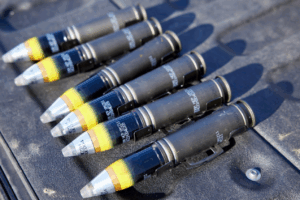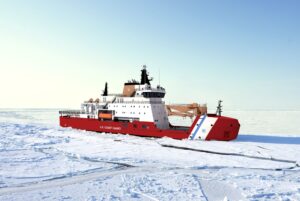Defense Daily
-
 Business/Financial
Business/FinancialEarnings, Sales Fall In SAIC’s Third Quarter; Interim CEO Reagan Outlines Priorities
Science Applications International Corp. [SAIC] on Thursday posted top and bottom-line declines in its third quarter although the company increased its sales guidance due to new acquisition and its adjusted […]
-
 Business/Financial
Business/FinancialStalker XE Block 25 And Alta X 2.0 Drones Part Of Skunk Works Test Of Artificial Intelligence Re-Planning
Lockheed Martin‘s [LMT] Skunk Works division said on Thursday that it used artificial intelligence to demonstrate how one drone facing fuel problems could return to base while another unmanned aerial […]
-
Thursday, December 4, 2025
- Pentagon To Spend $1 Billion On Rapidly Delivering Over 300,000 Small Drones By 2028
- Space GMTI Evolution Of U.S. Satellite Proliferation, NRO Official Says
- Army Awards Over $200 Million To Northrop Grumman For XM1211 Ammo Production
- Central Command Deploys One-Way Attack Drones In Middle East
- NRO Extends Work For HawkEye 360, Capella, ICEYE And Umbra
- Saronic Invests $300 Million To Add Production Capacity To Louisiana Shipyard
- Shield AI Brings Its Autonomy Solution To Space Domain In Partnership With Sedaro
- FTC Requires Boeing To Divest Certain Spirit Assets To Win Deal Approval
- Applied Aerospace And PCX Aerosystems Merge To Scale Aerospace Manufacturing Capabilities
- Navy Awards Two SLCM-N Task Agreements To Northrop Grumman, Pacific Engineering
- Davie Defense Completes Acquisition Of Texas-Based Shipyards
-
Thursday, December 4, 2025
- Pentagon To Spend $1 Billion On Rapidly Delivering Over 300,000 Small Drones By 2028
- Space GMTI Evolution Of U.S. Satellite Proliferation, NRO Official Says
- Army Awards Over $200 Million To Northrop Grumman For XM1211 Ammo Production
- Central Command Deploys One-Way Attack Drones In Middle East
- NRO Extends Work For HawkEye 360, Capella, ICEYE And Umbra
- Saronic Invests $300 Million To Add Production Capacity To Louisiana Shipyard
- Shield AI Brings Its Autonomy Solution To Space Domain In Partnership With Sedaro
- FTC Requires Boeing To Divest Certain Spirit Assets To Win Deal Approval
- Applied Aerospace And PCX Aerosystems Merge To Scale Aerospace Manufacturing Capabilities
- Navy Awards Two SLCM-N Task Agreements To Northrop Grumman, Pacific Engineering
- Davie Defense Completes Acquisition Of Texas-Based Shipyards
-
 Army
ArmyArmy Awards Over $200 Million To Northrop Grumman For XM1211 Ammo Production
The Army has awarded Northrop Grumman [NOC] a deal worth over $200 million for production of the XM1211 High Explosive Proximity (HEP) ammunition, the company said on Wednesday. Northrop Grumman’s […]
-
 Pentagon
PentagonPentagon To Spend $1 Billion On Rapidly Delivering Over 300,000 Small Drones By 2028
The Pentagon has detailed plans to spend just over $1 billion in the next two years to rapidly deliver more than 300,000 small one-way attack drones. A new Request for […]
-
 Space
SpaceNRO Extends Work For HawkEye 360, Capella, ICEYE And Umbra
Herndon, Va.’s HawkEye 360 said on Wednesday that it has received a follow-on 23 months of National Reconnaissance Office (NRO) funding for work with the agency’s Commercial Systems Program Office […]
-
 Business/Financial
Business/FinancialDavie Defense Completes Acquisition Of Texas-Based Shipyards
Davie Defense on Wednesday said it has completed its acquisition of Gulf Copper & Manufacturing Corp.’s shipbuilding assets in Texas, which will support the Coast Guard’s future Arctic Security Cutter […]
-
 Nuclear Modernization
Nuclear ModernizationNavy Awards Two SLCM-N Task Agreements To Northrop Grumman, Pacific Engineering
Two nuclear-armed sea-launched cruise missile (SLCM-N) launch task area agreements were awarded to Northrop Grumman‘s [NOC] Mission Systems division and Pacific Engineering. The award was announced on the National Security […]
-
 Business/Financial
Business/FinancialApplied Aerospace And PCX Aerosystems Merge To Scale Aerospace Manufacturing Capabilities
Two aerospace suppliers, Applied Aerospace and PCX Aerosystems, are merging to create greater scale as a supplier of precision hardware and systems for aircraft, rotorcraft, satellites, launch vehicles, and missile defense. Both companies […]

